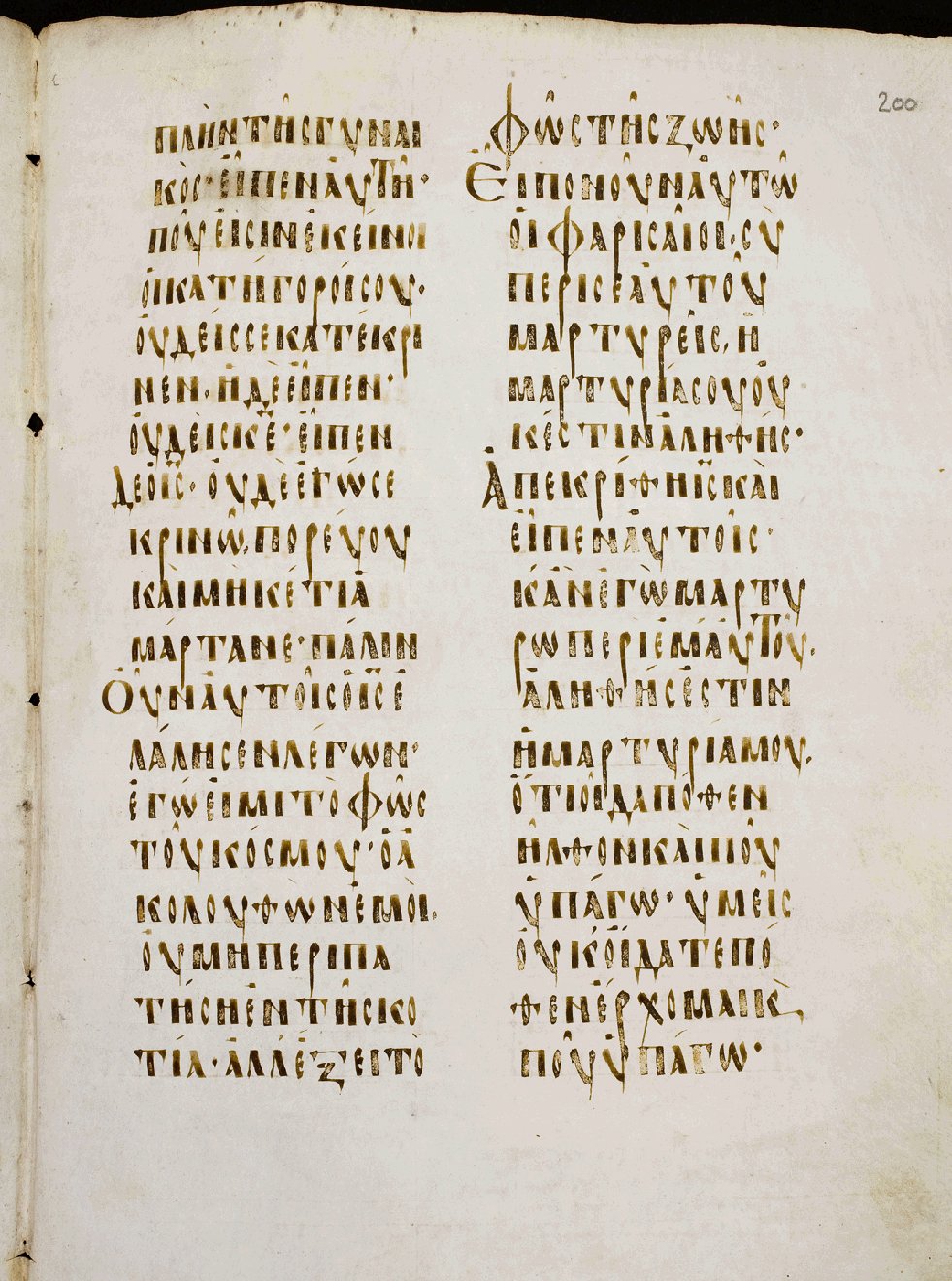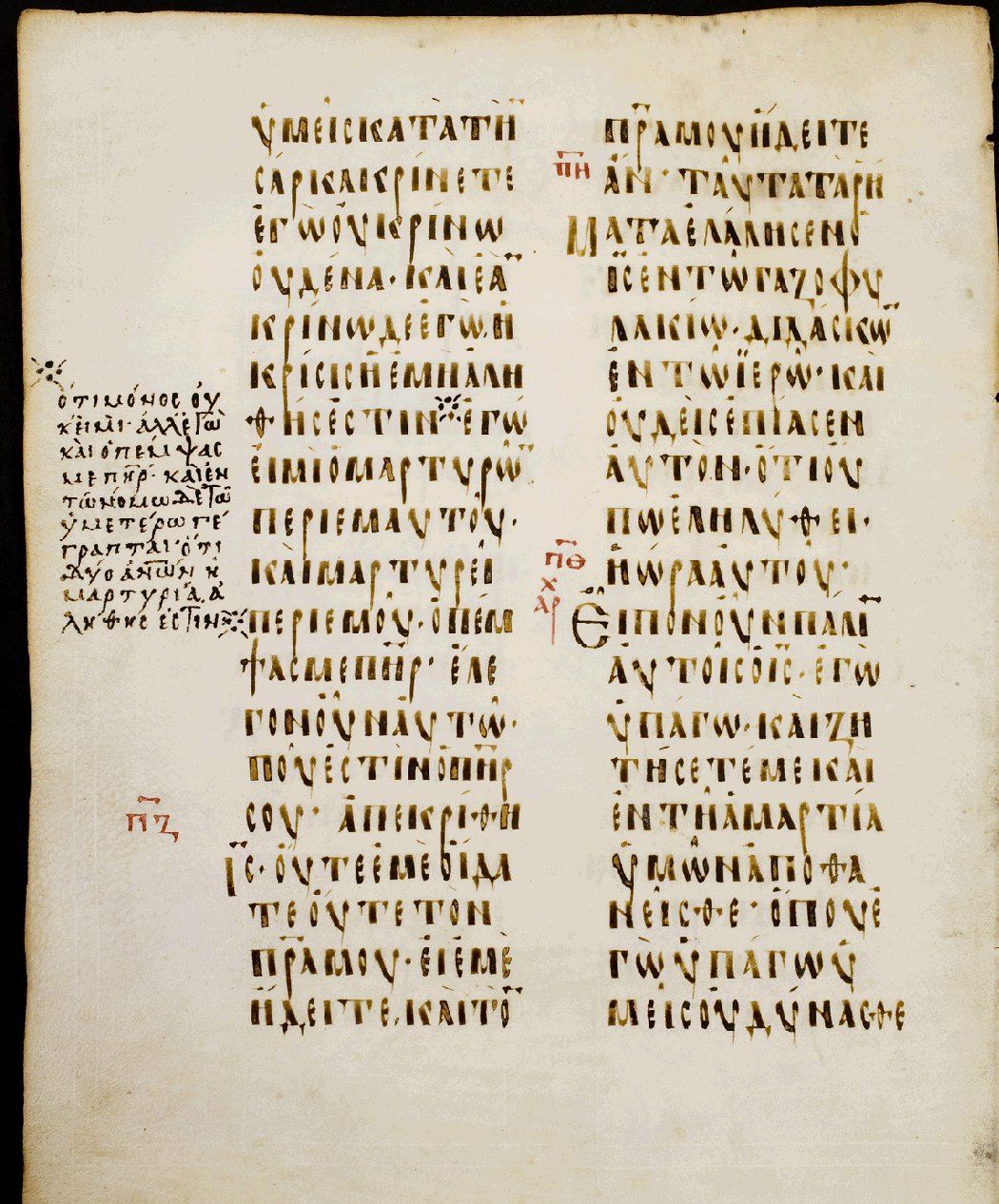Codex
Boreelianus (F)
Background
Codex F is important, for it is one of the earliest manuscripts which clearly contain John 8:1-11, in its proper place, even though most of the pages have been lost. The surviving pages that contain the last part of the passage are shown below.
Taken from: The Encyclopedia of New Testament Textual Criticism (Online: Waltz)
http://www.skypoint.com/members/waltzmn/ManuscriptsUncials.html
Photos & Headings have been added for clarity and navigation purposes.
Encyclopedia of NT TC
Manuscripts:
Codex Boreelianus - Fe (09)
Location / Catalogue No.:
Utrecht, University Library MS. 1.
Contents:
Contains the Gospels with significant lacunae, especially in Luke; the damage has been progressive, and some leaves have been lost since Wettstein saw it in 1730. (Between 1730 and 1830 it was in private hands, and was unbound, with the leaves becoming disordered and torn.) As it stands now, it begins with Matt. 9:1 (though in Wetstein's time it apparently started at 7:6); it also lacks Matt. 12:1-44, 13:55-14:9, 15:20-31, 20:18-21:5, (24:13-15 according to SQE but not Scrivener), Mark 1:43-2:8, 2:23-3:5, 11:6-26, 14:54-15:5, 15:39-16:19, John 3:5-14, 4:23-38, 5:18-38, 6:39-63, 7:28-8:10, 10:32-11:3, 12:14-25, 13:34-end.
Luke is in even worse shape; Scrivener reports that there are 24 different lacunae, and SQE does not even bother collating the manuscript in that book.
Date:
Dated paleographically to about the 9th century (so Tischendorf, von Soden, Aland; Tregelles preferred the 10th century).
Special Features:
It has the Ammonian sections but not the Eusebian references; otherwise it has all the features of late uncials, including accents and breathings.
Text-Type:
The text is definitely Byzantine; the Alands list it as Category V; von Soden lists it as Ki. Wisse's classification doesn't mean much in this case; he lists F as Kmix in Luke 1, but it is defective for the other two chapters. In all likelihood it is actually either Kx or Ki (what Wisse would call Kx Cluster W).
Notes:
The date of the manuscript makes it potentially important for the history of the Byzantine text, but the large number of lacunae significantly reduce its value; it would have been much better had another Byzantine manuscript (preferably one of a type other than Kx) been used in the apparatus of SQE and UBS4.
Photo 1: John 8:10-14

Greek Text
Column I
πλην της γυναι-
κος ειπεν αυτη [η γυνη]
που εισιν εκεινοι
οι κατηγοροι σου
ουδεις σε κατεκρι-
νεν /8:11/ η δε ειπεν
ουδεις KE [κυριε] ειπεν
δε [αυτη] ο IS [ιησους] ουδε εγω σε
[κατα]κρινω πορευου
και μηκετι α-
μαρτανε /8:12/ παλιν
ουν αυτοις ο IS [ιησους] ε-
λαλησεν λεγων
εγω ειμι το φως
του κοσμου ο α-
κολουθων εμοι
ου μη περιπα-
τησει εν τη σκο-
τια αλλ εξει το
Column II
φως της ζωης /8:13/
ειπον ουν αυτω
οι φαρισαιοι συ
περι σεαυτου
μαρτυρεις η
μαρτυρια σου ου-
κ εστιν αληθης /8:14/
απεκριθη IS [ιησους] και
ειπεν αυτοις
καν εγω μαρτυ-
ρω περι εμαυτου
αληθης εστιν
η μαρτυρια μου
οτι οιδα ποθεν
ηλθον και που
υπαγω υμεις [δε]
ουκ οιδατε πο-
θεν ερχομαι κ'[αι]
που υπαγω
Photo 2: John 8:15-21
